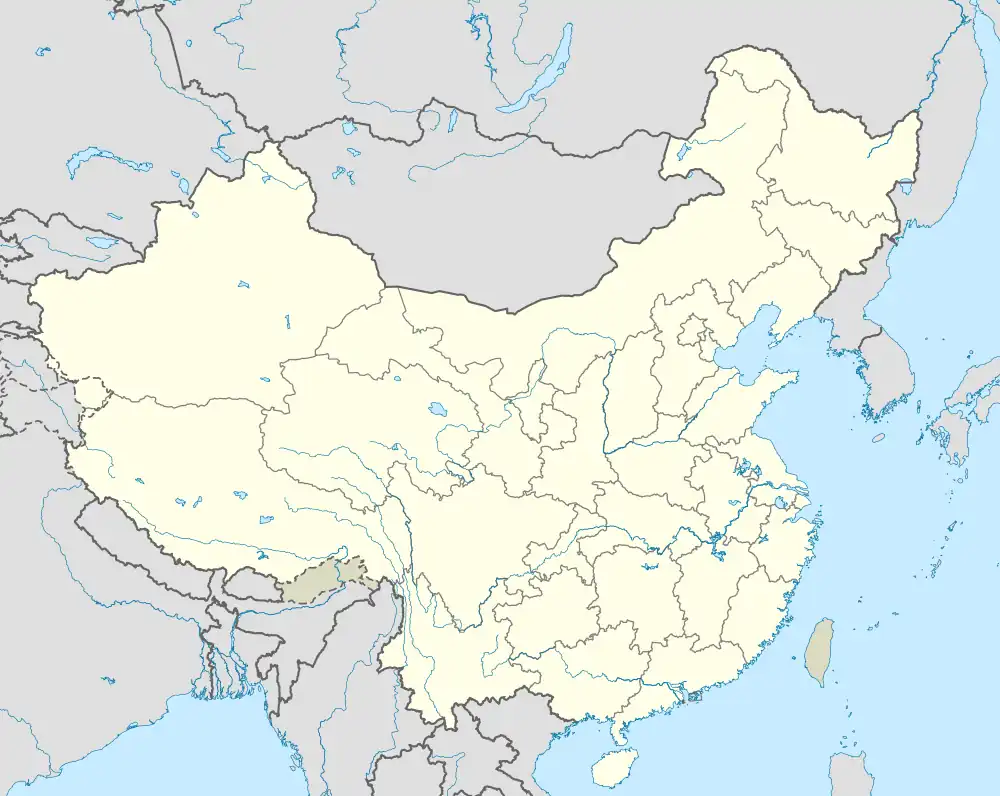Lizhuang
李庄镇 | |
|---|---|
 Lizhuang | |
| Coordinates: 34°23′29″N 116°28′58″E / 34.39139°N 116.48278°E | |
| Country | China |
| Province | Anhui |
| Prefecture-level city | Suzhou |
| County | Dangshan County |
| Population (2010) | |
| • Total | 45,817 |
Lizhuang (simplified Chinese: 李庄镇; traditional Chinese: 李莊鎮; pinyin: Lǐzhuāng Zhèn) is a town in Dangshan County, Suzhou, Anhui Province, China.[1] As of the 2010 Chinese Census, Lizhuang has a population of 45,817.[2]
The town has a humid subtropical climate. Many in Lizhuang are farmers, growing corn, pomegranates, and various vegetables.[3] There is also a small coal mine in the town.[3] Many of Lizhuang's adults have migrated elsewhere for work, leaving a large number of left-behind children to be raised by their grandparents.[3]
Traditional houses in the town are made from stone held together with a paste made from ashes.[3] Remittances from migrant workers have enabled some residents to construct homes with modern building materials such as bricks, roofing tile and cement.[3]
Administrative divisions
Lizhuang administers three residential communities and five administrative villages.[4]
Residential communities
Lizhuang administers the following three residential communities:[4]
Administrative villages
Lizhuang administers the following five administrative villages:[4]
Demographics
According to the 2010 Chinese Census, Lizhuang has a population of 45,817, down from the 49,845 recorded in the 2000 Chinese Census.[2]
In 2010, a Los Angeles Times reporter wrote a story on Lizhuang, using it as a microcosm for the growing phenomenon of left-behind children in China. In the story, the reporter found few able-bodied adults in the town, as many left to find more lucrative work elsewhere.[3] Much of Lizhuang's elderly population was left taking care of their children.[3]
Economy
Many people in Lizhuang are subsistence farmers, and common crops in the town include corn, pomegranates, and various vegetables.[3]
The town also has a coal mine, although it is not as large as those found in surrounding towns.[3]
References
- ↑ 2020年统计用区划代码(砀山县) [2020 Statistical Division Codes (Dangshan County)] (in Chinese). National Bureau of Statistics of China. 2020. Archived from the original on 2021-08-22. Retrieved 2021-08-22.
- 1 2 砀山县历史沿革 [Dangshan County Organizational History]. xzqh.org (in Chinese). 2015-12-29. Archived from the original on 2021-08-22. Retrieved 2021-08-22.
- 1 2 3 4 5 6 7 8 9 Stack, Meghan K. (2010-09-29). "China raising a generation of left-behind children". Los Angeles Times. Archived from the original on 2021-08-22. Retrieved 2021-08-22.
- 1 2 3 2020年统计用区划代码和城乡划分代码(李庄镇) [2020 Statistical Division Codes and Urban-rural Division Codes (Lizhuang)] (in Chinese). National Bureau of Statistics of China. 2020. Archived from the original on 2021-08-22. Retrieved 2021-08-22.